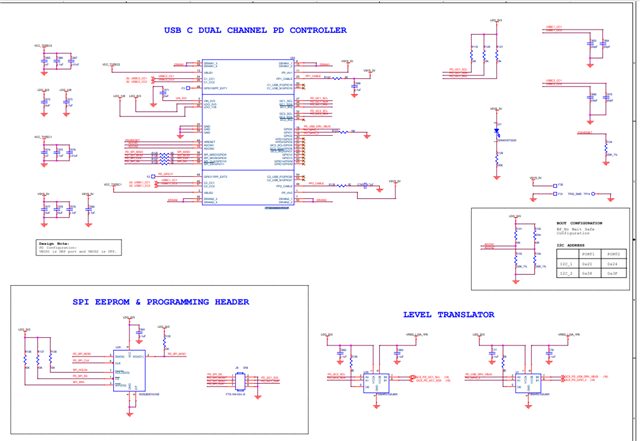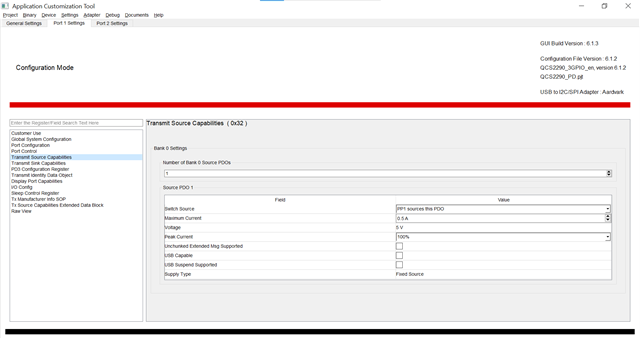Other Parts Discussed in Thread: TPS25751
Tool/software:
Hi,
In our design TPS65988DHRSHR is used for powering up the board, in our design we want to use port 0 as DRP port and port 1 as Power only port.
Queries are following
1. When we powered the board from power only port (port 1) and the pc is connected to port 0, then the port 1 is trying to charge the port 0 connected pc, how can i avoid this, is there any configuration need to change in the project file.
2.Can we make both the port 1 and port 0 hot swappable means the power should not turned off if any port is removed, now in our case when I remove the DRP port (port 0) even the port 1 power is turned ON the power is going for a second and coming back how to avoid this.
3.After completion of programing of TPS65988DHRSHR through the GUI using Aardvark its giving verification failed at the end, but the PD is working fine.
4. Since this part is not recommended for new design suggest a similar part who have similar pin and size which we can implement in our new design so that our layout work can be reduced.
Attaching the schematics and the .pjt file for your reference.



